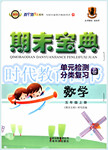
----Is ______ red bag under the table yours, Jean?
---- No, I only have _____ yellow bag. Maybe it��s Julie��s.
A. a; the B. the; a
C. a; a D. the; the
B ��������������������⣺��Jean������������Ǹ����������𣿡����ǣ���ֻ��һ����ɫ�İ���Ҳ����Julie�ġ���һ���ձ���ָ���ڶ��ձ�ʾ����һ������ѡB�� ��ĩ���䵥Ԫ�����ิϰ��ϵ�д�
��ĩ���䵥Ԫ�����ิϰ��ϵ�д�
| �꼶 | ���пγ� | �꼶 | ���пγ� |
| ��һ | ��һ��ѿγ��Ƽ��� | ��һ | ��һ��ѿγ��Ƽ��� |
| �߶� | �߶���ѿγ��Ƽ��� | ���� | ������ѿγ��Ƽ��� |
| ���� | ������ѿγ��Ƽ��� | ���� | ������ѿγ��Ƽ��� |
��Ŀ������Ӣ�� ��Դ�������г�����2018����꼶5���ۺ���ϰ��һģ��Ӣ���Ծ� ���ͣ��Ķ���ѡ
Special Festivals |
St. Anthony��s Day January 17th is St. Anthony��s Day in Mexico (ī����). It��s a day when people ask for protection for their animals by bringing them to church. But before the animals go into the church, the people usually dress them up in flowers and ribbons.
|
The Festival of Rakhi Long ago in India, a young lady who needed help sent her silk bracelet(����) to a king. Although he did not arrive in time to help her, he kept the bracelet as a sign between them. Today in India, during the festival of Rakhi, sisters of all ages tie bracelets around wrists of their brothers to show their care and love.
|
Spring Festival One of the biggest celebrations in China is Spring Festival. It's the first day of the lunar year. Families get together and watch special programs on TV with the family on the Lunar New Year��s Eve. People can see a lot of traditional programs too�� such as lion dancing or dragon dancing. They wish people a happy new year and a bright future.
|
Setsubun On the evening of February 3rd, people in Japan celebrate the end of winter and the beginning of spring. This is known as Setsubun. Family members throw dried beans around their homes, shouting, ��Good luck in!��
|
1.People celebrate the festival of Rakhi in ________.
A. Mexico. B. Chin A. C. Indi A. D. Japan.
2.Which festival is on the evening of February 3rd?
A. Setsubun. B. The Festival of Rakhi.
C. Spring Festival. D. St. Anthony��s Day.
3.What do people do on the Lunar New Year��s Eve?
A. Bring their animals to church. B. Watch special programs on TV.
C. Give a bracelet to their family. D. Throw beans around their homes.
1.C 2.A 3.B ����������ƪ���ĸ����ǽ������ĸ���ͬ�ط�������Ľ��գ�����������յ����ơ����ҡ�ʱ���Լ�һЩ����ϰ�ߵȡ� 1.ϸ�������⡣���ݶ����еڶ������յĽ���Long ago in India, a young lady��. Today in India, during the festival of Rakhi, sisters of all ages��.��...�鿴�𰸺ͽ���>>
��Ŀ������Ӣ�� ��Դ��2018���������п��ܸ�ϰ����Unit6��Ԫ���ز��� ���ͣ���ѡ��
�����ģ�Many people say if people plant more trees in_________ China, there will be few-
er sandstorms in Beijing.
A. south-east B. north-east
C. north-west D. south-west
C �����������⣺������˵������������й���������ֲ���������������ɳ�����ͻ���١�A. south-east���ϣ�B. north-east������C. north-west������D. south-west���ϡ����ݵ�����ʶ��ɳ������������ɳĮ���ʴ�ΪC���鿴�𰸺ͽ���>>
��Ŀ������Ӣ�� ��Դ�������п�Ӣ�������ר��ѵ��--����Ӿ� ���ͣ���ѡ��
The foreigner _________ visited our school is from Canada.
A. which B. when C. who D. whom
C �����������⣺�ι�����ѧУ����λ��������Լ��ô�which��������Ӿ䣬�������������������when�ں�ʱ����������Ӿ䣬��ʱ��״�who��������Ӿ䣬�����ˣ�������������whom��������Ӿ䣬�����ˣ������������Ϊ���д�the foreigner��ʾ�ˣ�����Ӿ���ȱ���������who��������ѡC���鿴�𰸺ͽ���>>
��Ŀ������Ӣ�� ��Դ�������п�Ӣ�������ר��ѵ��--����Ӿ� ���ͣ���ѡ��
һWould you like some fried rice?
��I would rather eat noodles ________have beef in them.
A. that B. than C. what D. as
B ��������would rather ��than ����Ը��Ҳ��Ը�⡭���鿴�𰸺ͽ���>>
��Ŀ������Ӣ�� ��Դ���㶫�п���ǰ��ֳ��50�죨��ǰӢ��Ѻ���һ�죩2018���п��ѡ���⣨�ڴʣ� ���ͣ���ѡ��
��Look! There is a monkey eating apple in the tree.
��En, monkey is very cute.
A. a; a B. a; the C. an; an D. an; the
D �������������������������ֻ�����������ϳ�ƻ��������������Ӻܿɰ���apple�ǿ������ʣ�����Ԫ����ͷ��������an��������һ�����ڶ����ᵽmonkey����the����ָ����ѡD���鿴�𰸺ͽ���>>
��Ŀ������Ӣ�� ��Դ���㶫�п���ǰ��ֳ��50�죨��ǰӢ��Ѻ���һ�죩2018���п��ѡ���⣨�ڴʣ� ���ͣ���ѡ��
��What do you think of the new movie The Monkey King , Sally?
��It��s funny one.
A. a B. an C. the D. ����
A �����������⣺------������µ�Ӱ������ա���ô����ɯ����-----����һ����Ȥ�Ĺ��¡�a/an��һ������ʾijһ���˻�ij�����е��κ�һ�����������ڵ�һ���ᵽij�˻�ij��ʱ���ò����ڴ���������ã���ʾһ����a���ڸ������ؿ�ͷ�Ŀ������ʵ���ǰ��an����Ԫ�����ؿ�ͷ�Ŀ������ʵ���ǰ�����ڴ�the��ʾ��ָij��Щ���˻�ij��Щ�������������ͬ�����������˻������ָǰ�ij��ֹ��������˵��˫����֪...�鿴�𰸺ͽ���>>
��Ŀ������Ӣ�� ��Դ������ʡ��������2018����꼶�п�ģ��Ӣ���Ծ� ���ͣ���ѡ��
you speak,_ your English will be.
A. The less; the more B. The more; the better
C. The less; the better D. The more: the less
B �����������⣺��˵��Խ�࣬���Ӣ��ͻ�Խ�á�A Խ�� ��Խ�� B Խ�Խ�� C Խ�١�Խ�� D Խ�Խ�١������ᄈ��֪�������õ�"the+�Ƚϼ���the+�Ƚϼ�"�ṹ����ʾ"Խ��Խ��"�� ֻ�д�B�Ϻ��ᄈ���������Դ�ΪB���鿴�𰸺ͽ���>>
��Ŀ������Ӣ�� ��Դ�������п�Ӣ�������ר��ѵ��--���ʺ����� ���ͣ���ѡ��
(2014��̩����) ---The cakes are quite delicious! Can I have one more?
--- Sorry, there is left. What about some biscuits?
A. none B. no one C. nothing D. nobody
A ���������������������Ϊ��---��Щ����ܺóԡ��ҿ����ٳ�һ����---�Բ���һ��Ҳû���ˡ�����Ҫ��none��û��һ���˻��no one��û���ˣ�nothing��û�ж�����nobody��û���ˡ������ᄈ��֪ӦѡA���鿴�𰸺ͽ���>>
����ʡ������Υ���Ͳ�����Ϣ�ٱ�ƽ̨ | �����к���Ϣ�ٱ�ר�� | ����թƭ�ٱ�ר�� | ����ʷ���������к���Ϣ�ٱ�ר�� | ������Ȩ�ٱ�ר��
Υ���Ͳ�����Ϣ�ٱ��绰��027-86699610 �ٱ����䣺58377363@163.com